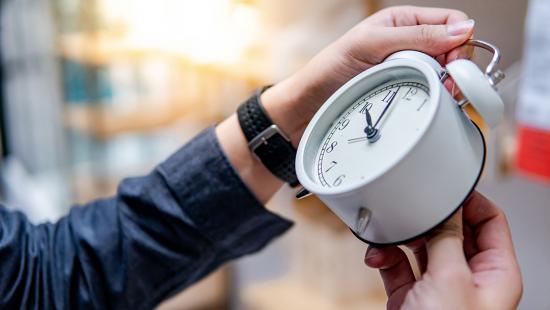
On the Second Sunday in March, millions of Americans turn their clocks ahead 1 hour to mark the start of Daylight Savings Time (DST). Daylight Saving Time (DST) was first implemented in 1908 in Thunder Bay, Canada. Today, approximately 70 countries utilize Daylight Saving Time in at least a portion of the country. Japan, India, and China are the only major industrialized countries that do not observe some form of daylight savings time.
Congress instituted daylight savings time during World War I and again during World War II and once again during the energy crisis of the early 1970s. After World War II, it was left to state governments to set the start and end dates for daylight savings time. Because this created many railroad scheduling and safety problems, however, Congress passed the Uniform Time Act in 1966. This law set the nationwide dates of daylight savinsg time from the last Sunday in April until the last Sunday in October. In 2007, Congress amended the Uniform Time Act to expand daylight saving time to what we know today, moving the start and end dates from the second Sunday in March to the first Sunday in November.
The current DST implementation largely has its roots in transportation. The idea behind the implementation was that having extra light later into the afternoon would save energy by reducing the use of artificial light. This idea has been debunked, as demonstrated by heating needs increasing in the morning in the winter, while air conditioning needs can also increase in the late afternoon in the summer. Another pro-daylight-savings argument has been that crime rates drop with more light at the end of the day and although this has been proved true, the change is very small and reportedly not significant enough to negate the drawbacks.
About a third of Americans say they don’t look forward to these twice-yearly time changes. An overwhelming 63% to 16% majority would like to eliminate them completely. Between 2015 and 2019, 29 states introduced legislation to abolish the transition. Reasons offered for the permanent change mainly focused on disruptions to daily routines caused by switching from standard time to daylight savings time.
There is evidence to support a permanent change. “Falling back” – going from daylight savings time to standard time each November by turning the clocks back 1 hour – is relatively benign. While some people may feel thrown off balance and need a few weeks to recover, research hasn’t linked it to serious impacts on health. “Springing forward,” however, is harder on the body, and a large body of research links the annual transition to daylight savings time to increased strokes, heart attacks and teen sleep deprivation.
The effects of the “Spring Forward” are highly correlated to our bodies natural sleep and wake cycle and circadian rhythm. This is evidenced by light’s effects on increasing levels of cortisol, a hormone that modulates the stress response or the effect of light on the amygdala, a part of the brain involved in emotions. Therefore, morning light is valuable for helping to set the body’s natural rhythms: it wakes us up and improves alertness. In contrast, exposure to light later into the evening delays the brain’s release of melatonin, the hormone that promotes drowsiness. This can interfere with sleep and cause us to sleep less overall, and the effect can last even after most people adjust to losing an hour of sleep at the start of daylight savings time.
So, if the research tells us that the effects are dire, why do we still use DST? One prominent argument is to the increased commerce it brings with having more evening hours of light; however, that argument has largely lost momentum since COVID-19 entered our lives.
The general consensus in the United States at this time is to abolish DST. The question then arises, should they pick permanent daylight savings time or permanent standard time?
Americans are split on whether they prefer permanent daylight savings time or permanent standard time. My allegiance clearly falls in line with team Standard time. While as a mom to small children I love the darkness and early bedtimes the November change brings, that is not why I choose Standard time. My choice is based on abundant evidence that daylight savings time is unnatural and unhealthy, while standard time most closely approximates natural light, with the sun directly overhead at or near noon.
Ultimately the authority to change DST lies with the Department of Transportation and Congress, but if you had a vote, what would it be?
Are you Team Daylight Savings time, or Teams Standard time?
If you are having a hard time adjusting to the new schedule, you are not alone. While we can’t change the mind of Congress, your Ohio State EAP is here to help with the stress and structure that may need adjustment. Reach out to us at 800.678.6265 or EAP@osumc.edu to learn more.
Image credit: istockphoto.com
